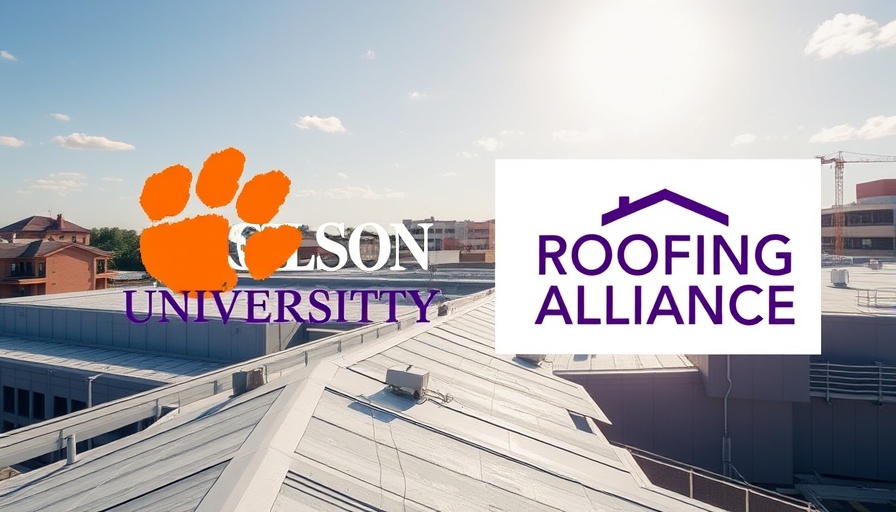
Why a New Minor in Roofing Could Affect Your Bottom Line
The launch of a minor in roofing at Clemson University, backed by the Roofing Alliance, is a significant step toward addressing workforce challenges in the roofing industry. With a focus on sustainable building practices and the latest technologies, this program aims to prepare students for diverse roles within the sector, which is vital to the construction landscape. Business owners, property developers, and facility managers stand to benefit not only from a fresh pool of skilled talent but also from the innovations that new graduates can bring to their projects.
The Importance of Workforce Development in Roofing
As the roofing industry faces a skilled labor shortage, initiatives like this minor program are crucial for ensuring that companies have access to well-trained individuals. Clemson's new roofing center will lead innovative research and educate students as early as middle school, developing modules that cater to a variety of skill levels. This broad approach not only aligns with the immediate needs of the industry but also sets the groundwork for lifelong learning opportunities—giving students paths for future careers in construction.
Innovative Research: Creating Opportunities in Roofing
The partnership between Clemson University and the Roofing Alliance is a prime example of how academia and industry can collaborate on pressing challenges. With an initial budget exceeding $1 million, the roofing research center aims to drive sustainable growth through innovative research. As the industry focuses more on sustainable materials and systems, this center can help produce new technologies and methodologies that will improve building outcomes and production efficiency. Businesses that leverage these advancements can expect not only lower operational costs but also a more positive environmental impact.
Future Predictions: What This Means for Construction
The introduction of a specialized education program like this minor presents a promising shift in the roofing landscape. As more students enroll and gain skills tailored to modern challenges in the roofing industry, we can anticipate a ripple effect. Technique advancements, sustainable innovations, and a heightened emphasis on roof performance will lead to better construction practices overall. Property developers and facility managers who are attuned to these trends can capitalize on emerging technologies and improve their investment returns.
Conclusion: Embracing Change for a Sustainable Future
The establishment of a roofing minor at Clemson University isn’t just a boon for students; it’s a harbinger of change for the entire construction industry. By supporting educational initiatives and innovative research, stakeholders in the roofing sector can enhance their operations while fostering a workforce equipped for the future. Businesses are encouraged to engage with educational institutions actively, as the changes in the roofing sector promise to affect both training and performance across the industry.
 Add Row
Add Row  Add
Add 




Write A Comment